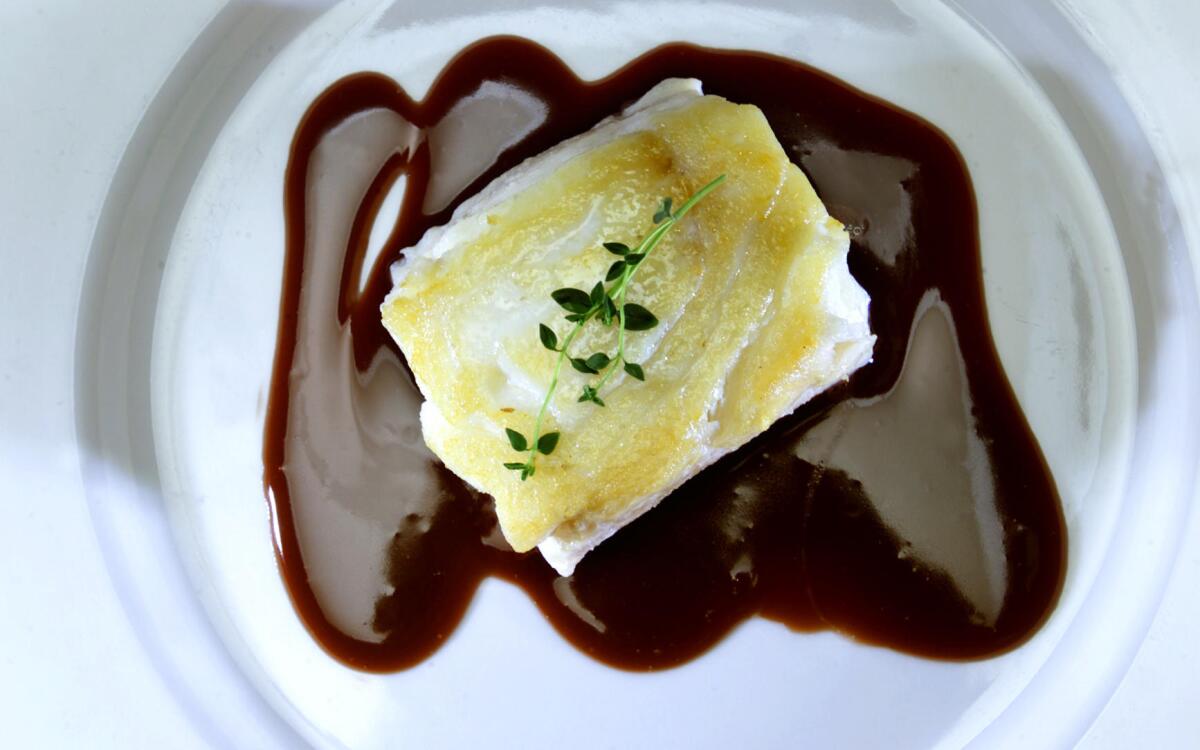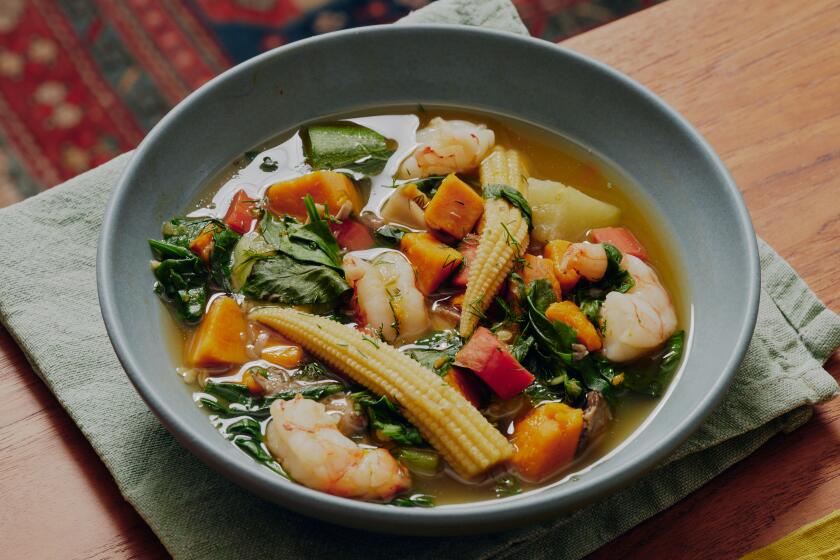Sauteed halibut with beurre rouge

The only thing thatâs nearly as pleasurable as drinking good wine is cooking it. And one of the best ways to do that is by starting with a reduction.
Wine, slowly reduced by gentle boiling to the syrupy essence of its fruit, can be used in creams and butters, as a seasoning for stuffings, as a glaze or--in its most satisfying transformation--as the backbone of the classic beurre rouge, mounted with plenty of butter.
Unlike most classical sauces used by professional chefs, which rely on rich veal stock, fish fumets or other time-consuming procedures or expensive ingredients, a sauce made from a wine reduction is equally well suited to the home cook. It requires only a few readily available ingredients.
As with all techniques, there are elements of finesse that make the difference between good and great results. The most important is to reduce slowly, without rapid boiling. Think of the process not as reduction, but rather as accelerated evaporation. Weâve found that reducing wines at a mere steam results in a powerfully sweet and clean fruit flavor without bitterness and without the pucker effect from astringent tannins that become problematic when you boil wine.
Start early--this can even be done days ahead, if you wish (reductions keep for a week or more in the refrigerator). Most important, take your time. Allow several hours for the process.
The second key to a successful wine reduction has more to do with common sense than technique. If you use a delicious bottle of wine, you will intensify that deliciousness by reducing it. If you use a cheap bottle of wine, you will intensify the cheapness. As a rule, use only wines that are pleasing to drink.
Begin your reduction by adding aromatic vegetables--shallots, carrots, mushrooms--to the wine over low heat. Halfway through the reduction, strain these out and discard them or they will soak up too much valuable wine.
The last step is simply knowing when to stop. For most reductions, youâll want to take the wine down to 10% of its original volume. At that point, it will have the consistency of a light syrup.
Sauces made from this syrup seem nothing less than miraculous because of the ease with which theyâre made and their visual beauty. For a classical beurre rouge--customarily served with fish--simply whisk butter into the syrup and season to taste. The resulting sauce should be a dark maroon color and have a mirror-like shine.
Sauces may be the most common use of the reduction, but many others are possible. Use it as a seasoning for stuffings--mushroom duxelles or ground veal, fortified with a red wine reduction, make an excellent ravioli stuffing, for instance. You could even add it to hamburger or put it in meatloaf.
When whipped into cream for a red wine cream, it can accompany a chilled salmon or sole salad or, lightly sweetened, a dessert of poached nectarines. Or you can chill it and knead it into butter for a lively compound butter.
Take your reduction down to a glaze so condensed that it holds its shape on a plate and you have a dramatic and powerfully flavored garnish to use around the borders of an elegant chicken salad, or a dessert of fresh strawberries.
Adding Port to a Cabernet or Merlot, or using only Port and no savory aromatics, will result in a sweeter sauce, excellent for dessert tarts or poached fruit.
As ever, the technique of wine reduction is simply a matter of manipulating flavor from one form into another--in this case transferring the flavor of the wine grape into another infinitely variable shape.
Combine carrot, shallots, mushrooms and wine in saucepan over low heat until steaming hot but not bubbling, 8 to 10 minutes. Reduce for 1 hour, then strain through a fine mesh sieve into a clean pan. Return to heat and reduce until wine measures about 1/2 cup, 1 1/2 to 2 hours. Be careful in later stages to keep heat turned very low to avoid scorching. Strain through a fine mesh sieve into a clean pan and set aside or refrigerate until ready to use.
Remove halibut from refrigerator 45 minutes before cooking. Season halibut liberally with salt a few minutes before cooking. In a hot pan over high heat, saute halibut in oil until one side is golden brown. Lower heat to medium, turn halibut and continue cooking 1 more minute. Transfer to a baking sheet tray and bake at 225 degrees just until fish begins to flake, 5 to 10 minutes.
Reheat sauce reduction over medium heat and add butter, 1 chunk at a time, whisking continuously until all butter is emulsified into reduction. Taste sauce and season with salt and pepper. Divide sauce among 6 plates, top with halibut and serve.
Get our Cooking newsletter.
Your roundup of inspiring recipes and kitchen tricks.
You may occasionally receive promotional content from the Los Angeles Times.















